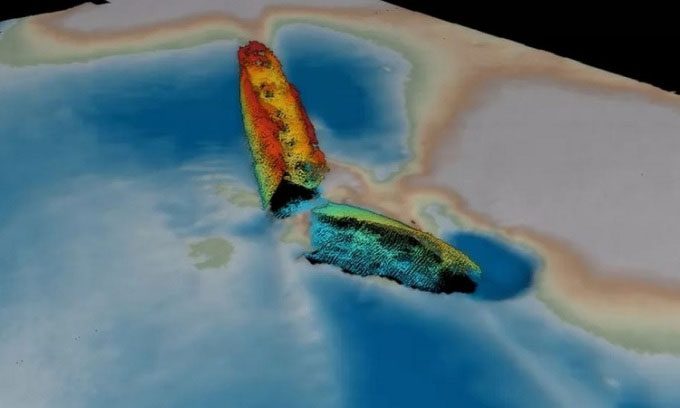Researchers Discover Wreck of Ship That Warned Titanic About Icebergs in Irish Sea.

Wreck of SS Mesaba on the seabed of Ireland. (Photo: Bangor University)
SS Mesaba, a merchant ship, was operating in the Atlantic Ocean in April 1912 and sent a wireless message to the Titanic, but this warning was ignored. The Titanic, a ship deemed unsinkable, struck an iceberg and sank on its maiden voyage, claiming the lives of 1,500 people. The Mesaba itself sank after being hit by a torpedo from a German U-boat in World War I in 1918. Using modern multi-beam sonar technology, a research team from Bangor University was able to identify the wreck of the Mesaba and determine its final resting place. This technology enabled them to map the seabed and identify structural details.
Mesaba is one of 273 shipwrecks located within a 19,425 square kilometer area of the Irish Sea. Researchers scanned this area using sonar and cross-referenced the data with the UK Hydrographic Office’s database and various other sources. The shipwrecks include fishing vessels, cargo ships, submarines, large passenger ships, and oil tankers.
Like the Titanic, the Mesaba was built in Belfast and was struck by a torpedo from the German U-118 while on a convoy from Liverpool to Philadelphia. Twenty crew members lost their lives, including the captain, when the ship sank approximately 21 kilometers off Tuskar Rock, southeast of the port of Rosslare in Ireland.
Dr. Innes McCartney, the lead researcher at Bangor University, noted the groundbreaking potential for marine archaeology, promising to attract the interest of historians, marine scientists, and environmental agencies. “Previously, we could only dive to a few sites a year to identify wrecks through observation. Sonar technology allows us to develop a relatively inexpensive method to survey wrecks. We can correlate the data with historical information without incurring high costs at each site,” McCartney shared.
Dr. Michael Roberts, who oversees the sonar survey at the university’s School of Ocean Sciences, mentioned that examining shipwreck sites also helps them better understand how objects on the seabed interact physically and biologically, thereby assisting scientists in advancing the field of marine energy.


















































